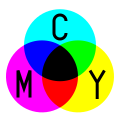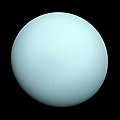Cyan: Difference between revisions
Undid revision 597989130 by AtlanticAhoy (talk) |
AtlanticAhoy (talk | contribs) mNo edit summary |
||
| Line 1: | Line 1: | ||
--[[User:AtlanticAhoy|AtlanticAhoy]] ([[User talk:AtlanticAhoy|talk]]) 19:47, 3 March 2014 (UTC)--[[User:AtlanticAhoy|AtlanticAhoy]] ([[User talk:AtlanticAhoy|talk]]) 19:47, 3 March 2014 (UTC)''Italic text''{{about|the color}} |
|||
{{about|the color}} |
|||
{{Infobox color |
{{Infobox color |
||
|title=Cyan |
|title=Cyan |
||
|hex=00FFFF |textcolor=black |
|hex=00FFFF |textcolor=black |
||
| image=File:CyanIcon. |
| image=File:CyanIcon.png€ |
||
|wavelength= 490–520 |
|wavelength= 490–520 |
||
|frequency = 610–575 |
|frequency = 610–575 |
||
Revision as of 19:47, 3 March 2014
--AtlanticAhoy (talk) 19:47, 3 March 2014 (UTC)--AtlanticAhoy (talk) 19:47, 3 March 2014 (UTC)Italic text
| Cyan | |
|---|---|
| File:CyanIcon.png€ | |
| Spectral coordinates | |
| Wavelength | 490–520 nm |
| Frequency | 610–575 THz |
| Common connotations | |
| water[1][2][3] | |
| Hex triplet | #00FFFF |
| sRGBB (r, g, b) | (0, 255, 255) |
| HSV (h, s, v) | (180°, 100%, 100%) |
| CIELChuv (L, C, h) | (91, 72, 192°) |
| Source | CSS Color Module Level 3 |
| B: Normalized to [0–255] (byte) | |
Cyan (/ˈsaɪ.ən/[4] or /ˈsaɪ.æn/;[5]) is a greenish blue color[6] and one of the three primary colors of the subtractive CMYK color model.[7] On the color wheels of the RGB (additive) and CMYK (subtractive) color models, it is located midway between blue and green, making it the complementary color of red.
Its name is derived from the Ancient Greek κυανός, transliterated kýanos, meaning "dark blue".[8][9] It was formerly known as "cyan blue"[10] or cyan-blue[11] and its first recorded use of as a color name in English was in 1879.[12] Further origins of the color name can be traced back to a dye produced from the cornflower (Centaurea cyanus).[13][14]
The web color cyan is synonymous with aqua. In most languages, 'cyan' is not a basic color term and it phenomenologically appears as a greenish vibrant hue of blue to most English speakers. Reasons for why cyan is not linguistically acknowledged as a basic color term can be found in the frequent lack of distinction between blue and green in many languages. Some varieties in the cyan color range are teal, turquoise, electric blue, aquamarine, and other colors described as blue-green.
In the CMYK color model, used in color printing, cyan is one of the primary colors, along with magenta, yellow, and black, which can be overlaid to produce all different colors. In the additive color system, or RGB color model, used to create all the colors on a computer or television display, cyan is made by mixing equal amounts of green and blue light. Since it is the complement of red, it can also be made by the removal of red from white light. Mixing red light and cyan light at the right intensity on a black screen will make white. Cyan light has a wavelength of between 490 and 520 nanometers, between the wavelengths of blue and green.[15]
Gallery
-
In the RGB color model, used to make colors on computer and TV displays, cyan is created by the combination of green and blue light.
-
In the RGB color wheel of additive colors, cyan is midway between blue and green.
-
In the CMYK color model, used in color printing, cyan, magenta and yellow combined make black. In practice, since the inks are not perfect, some black ink is added.
-
Color printers today use magenta, cyan, and yellow ink to produce the full range of colors.
-
Cyan and red are complementary colors. They have strong contrast and harmony, and if combined, they make either white, black or grey, depending upon the color system used.
-
Cyan is the color of shallow water over a sandy beach. The water absorbs the color red from the sunlight, leaving a greenish-blue color.
-
The dome of the Tilla Kari Mosque in Samarkand, Uzbekistan (1660) is cyan. The color is widely used in architecture in Turkey and Central Asia.
-
The planet Uranus. seen from the Voyager 2 spacecraft. The cyan color comes from clouds of methane gas in the planet's atmosphere.
-
A surgical team in Germany. Surgeons and nurses often wear gowns colored cyan, and operating rooms are often painted that color, because it is restful to the eyes, is the complement of red and thus does not show bloodstains as vividly, and it causes the least anxiety to patients.
Cyan on the web and in printing
The web colors cyan and aqua
| Cyan (additive secondary) | |
|---|---|
| Hex triplet | #00FFFF |
| sRGBB (r, g, b) | (0, 255, 255) |
| HSV (h, s, v) | (180°, 100%, 100%) |
| CIELChuv (L, C, h) | (91, 72, 192°) |
| Source | X11 |
| B: Normalized to [0–255] (byte) | |
The web color cyan shown at right is a secondary color in the RGB color model, which uses combinations of red, green and blue light to create all the colors on computer and television displays. In X11 colors, this color is called both cyan and aqua. In the HTML color list, this same color is called aqua.
The web colors are more vivid than the cyan used in the CMYK color system, and the web colors cannot be accurately reproduced on a printed page. To reproduce the web color cyan in inks, it is necessary to add some white ink to the printer's cyan below, so when it is reproduced in printing, it is not a primary subtractive color. It is called aqua (a name in use since 1598) because it is a color commonly associated with water, such as the appearance of the water at a tropical beach.[16]
Process cyan (pigment cyan) (printer's cyan)
| Cyan (subtractive primary) | |
|---|---|
| Hex triplet | #00B7EB |
| sRGBB (r, g, b) | (0, 183, 235) |
| HSV (h, s, v) | (193°, 100%, 92%) |
| CIELChuv (L, C, h) | (69, 74, 229°) |
| Source | CMYK[17] |
| B: Normalized to [0–255] (byte) | |
Cyan is also one of the common inks used in four-color printing, along with magenta, yellow, and black; this set of colors is referred to as CMYK as in spectrum(s).
While both the additive secondary and the subtractive primary are called cyan, they can be substantially different from one another. Cyan printing ink can be more saturated or less saturated than the RGB secondary cyan, depending on what RGB color space and ink are considered.
Process cyan is not an RGB color, and there is no fixed conversion from CMYK primaries to RGB. Different formulations are used for printer's ink, so there can be variations in the printed color that is pure cyan ink. A typical formulation of process cyan is shown in the color box at right.
In science and nature
The color of water
- Pure water is nearly colorless. However, it does absorb slightly more red light than blue, giving large volumes of water a bluish tint; increased scattering of blue light due to fine particles in the water shifts the blue color toward green, for a typically cyan net color.[18]
Cyan and cyanide
- Cyanide derives its name from Prussian blue, a blue pigment containing the cyanide ion.
Bacteria
- Cyanobacteria (sometimes called blue-green algae) are an important link in the food chain.
Astronomy
- The planet Uranus is colored cyan because of the abundance of methane in its atmosphere.
Energy
- Natural gas (methane), used by many for home cooking on gas stoves, has a cyan colored flame when burned with a mixture of air.
Photography and film
- Cyanotype, or blueprint, a monochrome photographic printing process that predates the use of the word cyan as a color, yields a deep cyan-blue colored print based on the Prussian blue pigment.[19]
- Cinecolor, a bi-pack color process, the photographer would load a standard camera with two films, one orthochromatic, dyed red, and a panchromatic strip behind it. Color light would expose the cyan record on the ortho stock, which also acted as a filter, exposing only red light to the panchromatic film stock.
Medicine
- Cyanosis is an abnormal blueness of the skin, usually a sign of poor oxygen intake. i.e. the patient is "cyanotic".
- Cyan is associated with the throat chakra in vedic medicine.
Why surgeons wear cyan gowns
- In the 19th century, surgeons wore white gowns, but in the 20th century surgeons began to wear cyan or green surgical gowns, for several reasons. First, in the brightly lit operating room, green reflected less light than white and caused less strain on the eyes of the medical team. Second, cyan is the complementary color of red, so red blood on a cyan gown looks black or gray, and not red, and is not as vivid. Also, since red and green are complementary colors, shifting your sight to green after staring at red for long periods of time does not cause green after-images, as shifting from red to white will do. Lastly, since green is considered one of the most restful and soothing colors, it causes less anxiety to patients.[20]
In human culture
Architecture
- Cyan colored tiles are often used to pave swimming pools to make the water within them seem more intensely colored, and therefore more inviting.
Music
- Cyan was a British progressive rock band from the 1980s and 1990s.
See also
- List of colors
- Distinguishing blue from green in language
- Orange, formerly called "yellow-red" (compare with blue-green)
- Variations of cyan
References
- ^ "Results for "cyan"". Dictionary.com. Lexico Publishing Corp. 2007. Retrieved 2007-11-22.
- ^ Oxford English Dictionary
- ^ Khalifa, Rashad (trans). "Sura 76, The Human (Al-Insaan)". Quran The Final Testament. Retrieved 2007-11-30.
- ^ "cyan". Oxford English Dictionary (Online ed.). Oxford University Press. (Subscription or participating institution membership required.)
- ^ Cyan definition on dictionary.com
- ^ http://www.merriam-webster.com/dictionary/cyan
- ^ Shorter Oxford English Dictionary, 5th Edition, Oxford University Press, 2002.
- ^ http://www.etymonline.com/index.php?term=cyan Online etymology dictionary.
- ^ κύανος, Henry George Liddell, Robert Scott, A Greek-English Lexicon, on Perseus
- ^ J. Arthur H. Hatt (1908). The Colorist: Designed to Correct the Commonly Held Theory that Red, Yellow, and Blue are the Primary Colors and to Supply the Much Needed Easy Method of Determining Color Harmony. D. Van Nostrand Company.
- ^ Shorter Oxford English Dictionary, 5th edition.
- ^ Maerz and Paul A Dictionary of Color New York:1930 McGraw-Hill page 194
- ^ The Pigment Compendium: A Dictionary of Historical Pigments, Nicholas Eastaugh, Valentine Walsh, Tracey Chaplin, Ruth Siddall, 2004, Routledge, ISBN 9781136373855
- ^ http://books.google.ca/books?id=2OH28vpzzMsC&lpg=PT395&dq=cornflower%20blue&pg=PT410#v=onepage&q=cornflower%20blue&f=false
- ^ About.com - Physics About.Com - Physics (Retrieved 6-18-2013)
- ^ Maerz and Paul The Dictionary of Color 1930 (see under Aqua in Index, page 189)
- ^ Tintbooks - Get Accurate CMYK Color Results For Your Printing Projects CMYK color tintbook:
- ^ Craig F. Bohren (2001). Clouds in a Glass of Beer: Simple Experiments in Atmospheric Physics. Courier Dover Publications. ISBN 0-486-41738-7.
- ^ Mike Ware (1999). Cyanotype: the history, science and art of photographic printing in Prussian blue. NMSI Trading Ltd. ISBN 1-900747-07-3.
- ^ [1] Facebook page of Central Arizona Rare Disease Support










